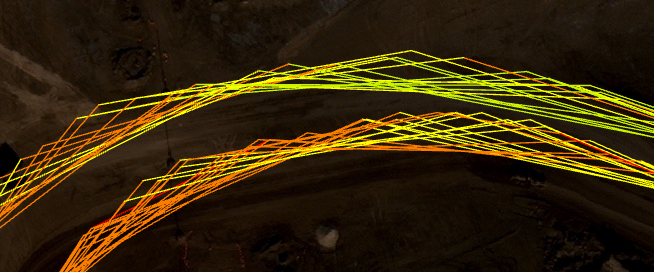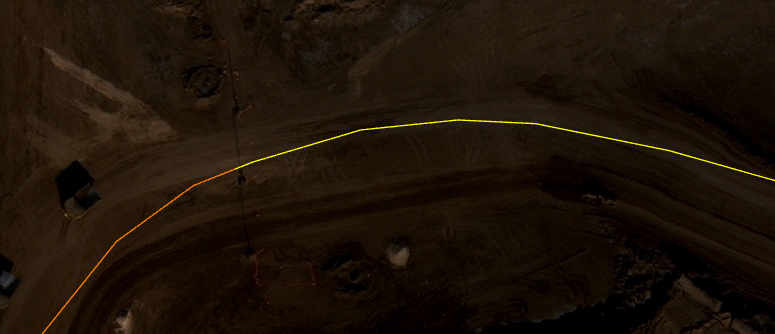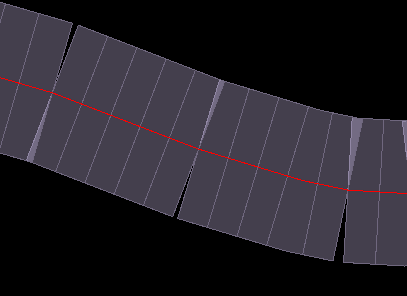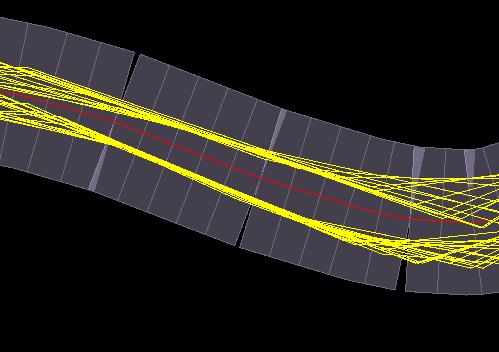Hello FME community!
I am working on a project to identify traffic congestion within our mining operations. My data source includes GPS points of all vehicles and I have done the work to 'connect the dots' of all GPS points to create speed segments. As you can see in the image below, I now have traffic routes for each individual vehicle.
What I am trying to do now is create a "Median Line" for each side of the road, by determining the median value for the segments within a certain distance (i.e. 100m), just like the Traffic layer in Google Maps. My thoughts are to use a "Line Splitter" to split each segment into 100m parts, and then "Nearest Neighbor Aggregator", followed by a "List Exploder", then an aggregator to calculate the median.
Input:
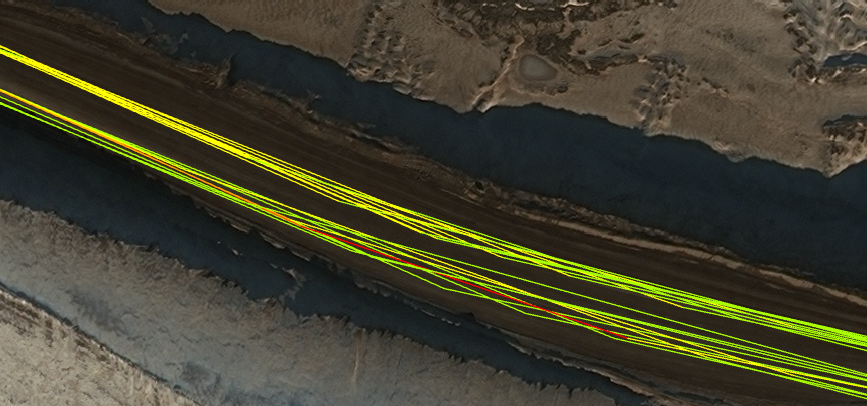
Desired output:
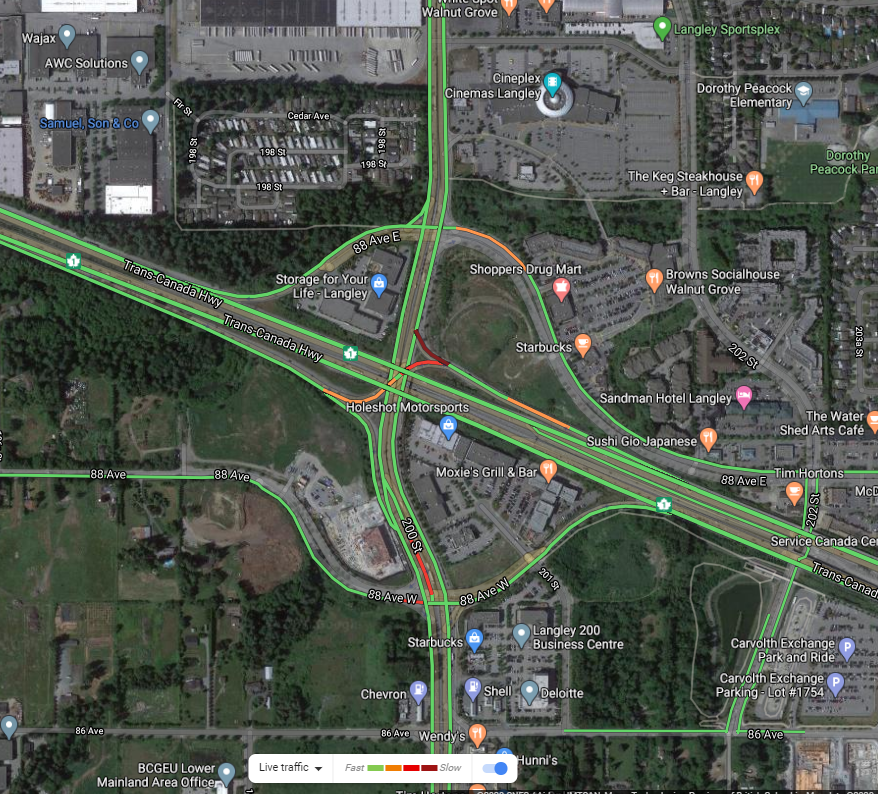
Any suggestions here would be awesome!
Thank you!






